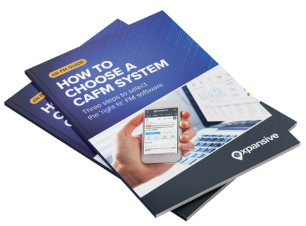The road to CAFM funding is an uncertain one. And if you fail to present your business case properly it can end up a complete dead end. What are the key mistakes to avoid?
When events are out of your control
Sometimes reasons for losing out on budget are out of your control. Episodes like the Covid pandemic can suddenly change business priorities and divert money elsewhere. At the same time, changes in upper management might mean carefully cultivated projects lose influential backers and end up being defunded. Then there are the big structural shifts in your organisation following acquisition or takeover that could throw the whole future of your team into question - let alone your funding needs.
But there are some things you can control
But away from those worse-case scenarios, there may be plenty of other things you’re doing that could be damaging your chances of success.
When it comes to presenting your business case to your BODs many Facility Managers make some common and critical mistakes.
Not making the financial case
Making a sound financial case is key to the success of your internal pitch for budget.
You need to show the BODs (and specifically your finance team) that your chosen CAFM solution will represent value for money and bring a clear return on investment.
You need to quantify the time and resource you’re currently wasting through unoptimised, manual FM operations and using clunky software.
Most importantly you should show:
- The savings you are anticipating from:
- automating help desk workflows
- digitising asset management
- Improved budgeting and cost control
- The fines the business risks through current lack of compliance control
If you haven’t got figures against these items then your case could look pretty thin and unattractive to the business.
But you don’t have to work this out all on your own. A good CAFM supplier should be able to help you figure out exactly what these numbers look like including your total ROI figures for the years following a CAFM implementation.
When you’re presenting your business case make sure the numbers are centre stage.
Missing the strategic advantages
Presenting your CAFM system as a ‘laundry list’ of functions and features won’t persuade your BODs that the solution can help the business tackle their long term strategic challenges.
The BODs aren’t interested in a list of software modules that you are hoping to buy to make your life easier. They want to know how the investment will benefit the business as a whole.
After all, these days the administrative headache of day to day management of buildings and assets can easily be shipped out to the ‘lowest bidder’ in outsourcing or TFM projects.
Instead, your business case for CAFM tools should demonstrate how they can bring more control, visibility and savings directly to your business:
- FM budget transparency for the entire organisation - showing budget vs spend vs results
- Collecting data to optimise supplier / contractor performance
- Collecting asset management data to make better Capex decisions
- Report on trends in demand for FM services and stress on assets to show you:
- Shifts in customer behaviour
- New opportunities to save money
- New opportunities to optimise
- New opportunities to innovate
Not taking the holistic view
You may have been so busy making the business case around your particular needs, that you’ve ignored the wider business context.
You may be talking to your immediate boss to try and lever budget to streamline the way your team works right now. But is there a wider need for this tool in your company that you haven’t noticed?
Are you proposing a solution for your individual business unit, when there is a bigger national or international opportunity within your company that will lower costs overall and integrate the solution further?
The last thing you want is someone in another part of the organisation to see your proposal at the last minute and decide they need to roll out a solution in a completely different way. This could trigger a whole new procurement process and delay your CAFM even further.
When you are doing your initial research about implementing a system you should make sure there is no ‘big picture’ opportunity that you are missing.
Not doing your homework
What if you’re asked to present to the BODs?
This can be a nerve-racking moment for FMs who are more used to the ‘back room’ than the limelight.
But don’t forget, no one expects you to be a world class presenter. Still, they do expect you to be able to answer questions about your proposal and justify the investment the business is expecting you to make.
Before you go into a meeting make sure you have rehearsed your ‘elevator pitch’, that you know the key points you want to make and that you can back up what you’re saying with evidence.
And always make sure you’ve got something to ‘leave behind’.
Not writing a formal business case document
Going into a meeting to argue for CAFM funding without a formal document to back up your claims is a big mistake. Your business case needs to be a clear and well argued written document if the BODs are going to take it seriously.
Also, having all those arguments written down and in one place will leave something concrete behind for your CEO or BODs to consider.
This document could prove key to their final decision making. It will also be vital to keep projects on track if there’s a change of management or the details of the proposal need to be shared with someone else for final approval.
We know that FMs all too often fail to get the budget they need to proceed with a CAFM project. But avoiding these common mistakes will make a successful outcome much more likely.



